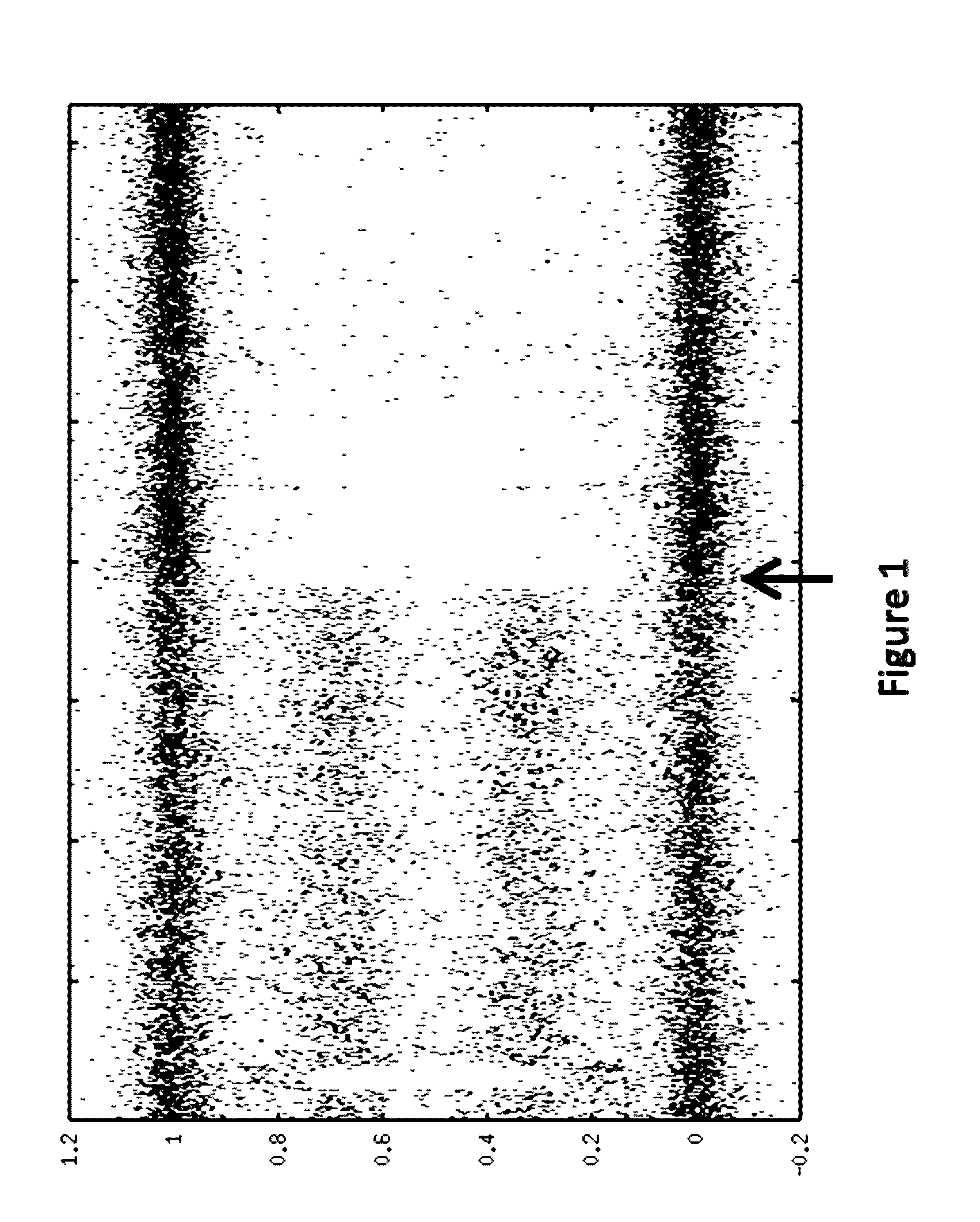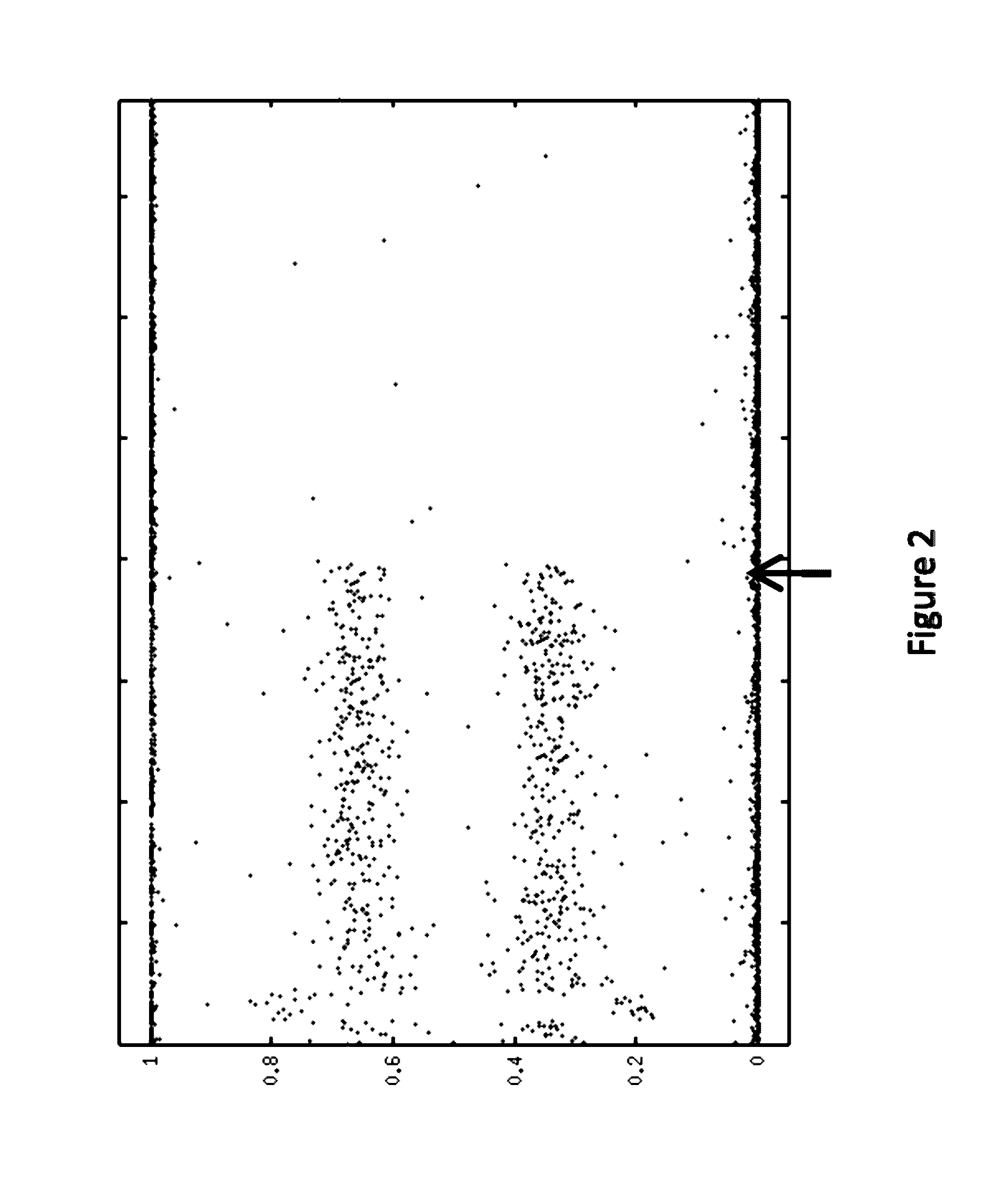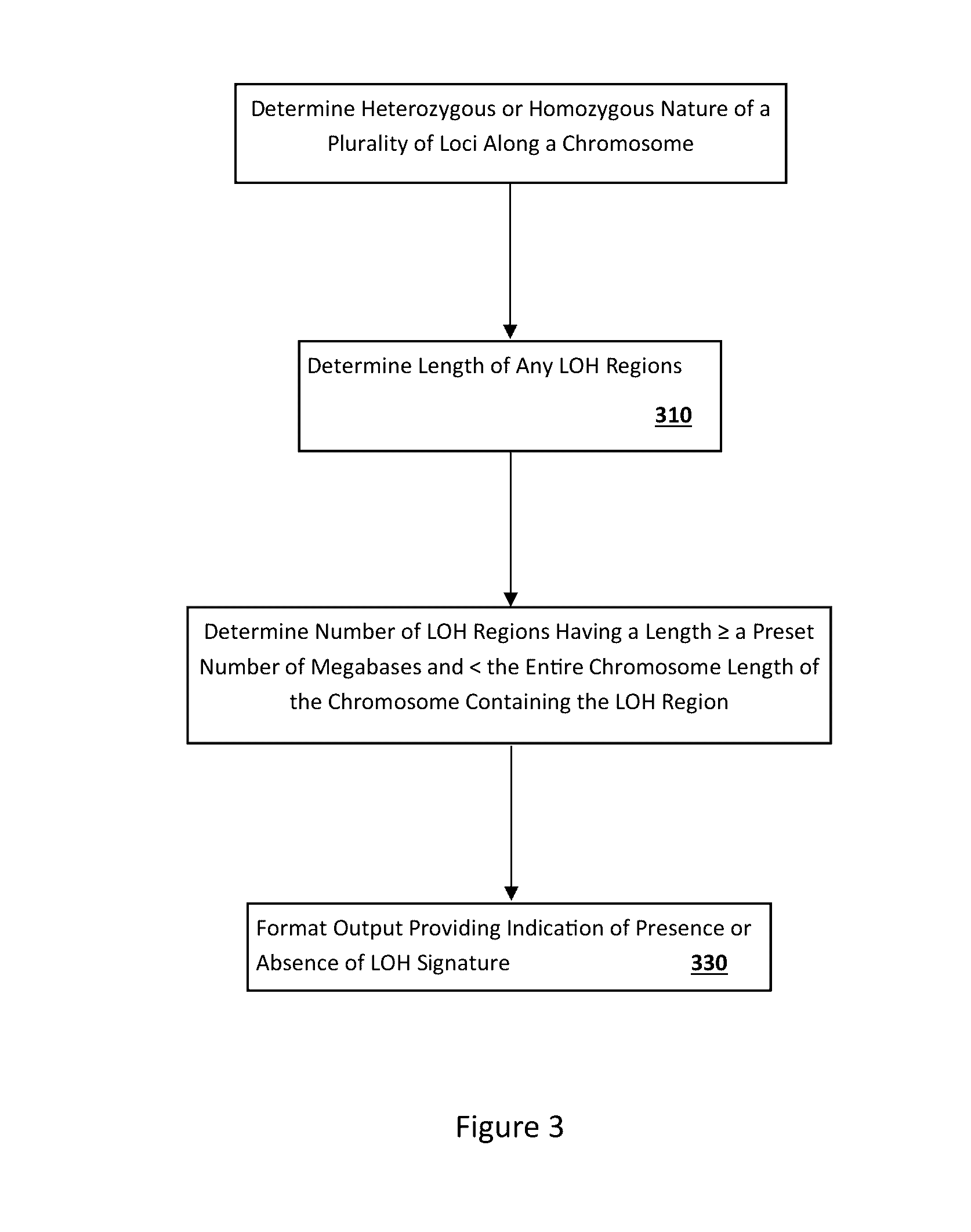Methods and materials for assessing loss of heterozygosity
a heterozygosity and heterozygosity technology, applied in the field of methods and materials for assessing the loss of heterozygosity, can solve the problem of serious public health problems such as cancer
- Summary
- Abstract
- Description
- Claims
- Application Information
AI Technical Summary
Benefits of technology
Problems solved by technology
Method used
Image
Examples
example 1
Assessing LOH Regions and HDR
[0144]Two sets of tumors were used from advanced ovarian cancer patients. The first set of 94 tumors (training set) was used to derive a candidate signature, and the second set of 40 tumors (validation set) was used to validate the signature. All coding regions of BRCA1 and BRCA2 genes were sequenced to detect germ line and somatic mutations. Levels of BRCA1 and BRCA2 mRNA expression were measured, and Affymetrix SNP microarrays were performed.
[0145]A computer program was used to reconstruct LOH signature status based on allele intensities derived from the microarray data. An algorithm was developed and implemented as a computer program to reconstruct LOH regions based on genotype (e.g., SNP genotype) data.
[0146]One point of the algorithm was to first reconstruct allele specific copy numbers (ASCN) at each locus (e.g., SNP). ASCNs are the numbers of copies of both paternal and maternal alleles. An LOH region was then determined as a stretch of SNPs with ...
example 2
Chemo Toxicity Responses
[0154]In preparation of chemo toxicity response experiments, all cell lines were grown at 37° C. plus 5% CO2 in 75 cm2 tissue culture flasks (VWR International, Inc. Cat #353136) and the recommended growth medium. Before performing each experiment, each cell line was trypsinized (Invitrogen Corporation Cat #25200-056), counted, and seeded in Advanced RPMI 1640 (Invitrogen Corporation Cat #12633-020), 3% FBS, 1% penicillin / streptomycin (Invitrogen Corporation Cat #15140-122) at 2500 cells or 5000 cells in 100 μL media per well from columns 2-12 of 96-well polystyrene microplates with clear bottom (Perkin Elmer Cat #6005181), leaving column 1 with 100 μL per well of media only. The cell-seeded plates were then incubated at 37° C. plus 5% CO2 overnight.
[0155]Two different final drug concentration working stocks were prepared. In cases where 100% DMSO was required for drug solubility, Advanced RPMI 1640 was used as the diluent for the highest concentration. Advan...
example 3
Further Validation of HR Deficiency Assay
Materials and Methods
Ovarian Tumor Samples
[0159]Three independent human ovarian cancer cohorts were used. 1: 152 unselected ovarian cancer samples. 2: 53 high grade serous ovarian tumors. 3: Publicly available data from 435 serous ovarian cancer samples for which complete information was available were downloaded from The Cancer Genome Atlas (TCGA) Network web site on Oct. 31, 2011. All cohorts were obtained under Institutional Review Board (IRB)-approved protocols. Patient and tumor characteristics are shown in Table 2. Varying numbers of samples were utilized in the assays described (Table 3).
TABLE 2Patient and cancer characteristics.SecondFirst cohortcohortThird cohortTotal Number of Patients15253435Age at diagnosisRange37-88 38-77 30-89 Median595659Unknown 4 (2.6%)00Follow-up timeRange20-5570213-32948-5480Median1127701874Unknown 5 (3.2%)02 (0.46%)Stage1 9 (5.9%)06 (1.38%)214 (9.2%)021 (4.83%) 3107 (70.4%)46 (86.8%)338 (77.70%) 4 21 (13.8...
PUM
 Login to View More
Login to View More Abstract
Description
Claims
Application Information
 Login to View More
Login to View More - R&D
- Intellectual Property
- Life Sciences
- Materials
- Tech Scout
- Unparalleled Data Quality
- Higher Quality Content
- 60% Fewer Hallucinations
Browse by: Latest US Patents, China's latest patents, Technical Efficacy Thesaurus, Application Domain, Technology Topic, Popular Technical Reports.
© 2025 PatSnap. All rights reserved.Legal|Privacy policy|Modern Slavery Act Transparency Statement|Sitemap|About US| Contact US: help@patsnap.com



